As Piano Nobile’s exhibition of Barbara Hepworth’s stringed sculptures and paintings enters the final week, InSight considers an explosive stylistic change in her work that occurred in the fifties.
InSight No. 170
Barbara Hepworth, Rhythmic forms, 1957
After the Second World War, artists in Paris and New York used black paint to create abstract frameworks that were fierce, brutish, transgressive and asymmetrical. This phenomenon is usually defined as a stylistic trait of either Abstract Expressionism or tachisme depending on the country where an artist was working. Different paths were explored by Franz Kline and Jackson Pollock in New York and Pierre Soulages, Hans Hartung and Alfred Manessier in Paris. Meanwhile in Cornwall, at a spiritual remove from the metropolitan manners of these artists and their work, Barbara Hepworth (1903–1975) found meaning in her own form of gestural black line painting. In 1957 and 1958, she made paintings and drawings such as Rhythmic forms that were strikingly dissimilar to her previous work.
In the mid-fifties Hepworth took consecutive leaps into the unknown. Shortly before she began to make gestural line paintings and drawings, she produced her first sculptures with sheet brass and string—a palette of materials at odds with the process of direct carving that had defined much of her work until that point. Hepworth made works in this new sculptural idiom in 1956 and 1957, and four examples are displayed in Piano Nobile’s exhibition.
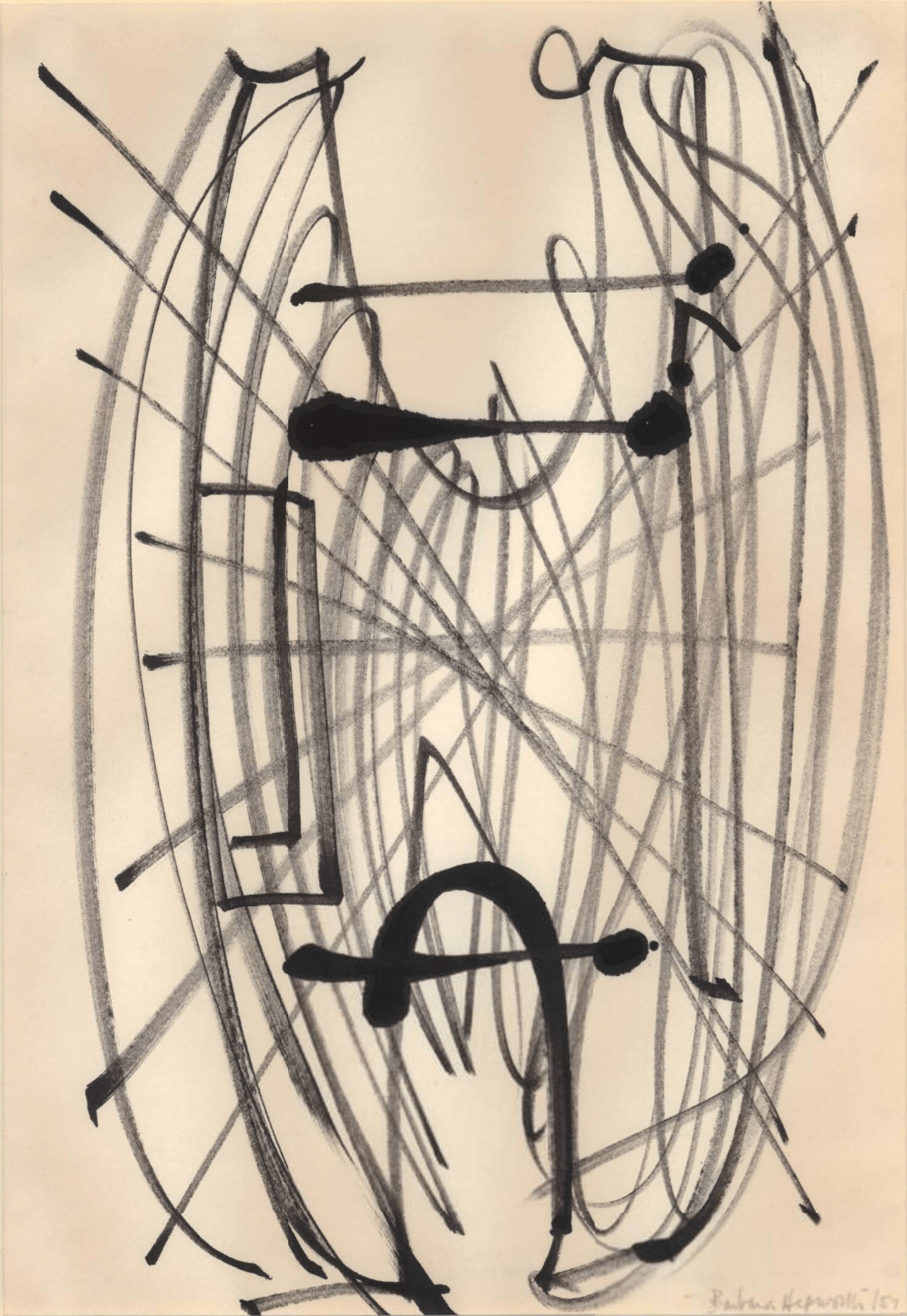
In Orpheus, Curlew and Winged figure, curving planes of cut and rolled metal were threaded with string disposed in a pattern of spiralling lines. The form of Winged figure—later made famous when Hepworth adopted it for the John Lewis Oxford Street commission—found expression in some of her line drawings. These works on paper show the fluid quality of Hepworth’s line, which interchangeably evokes the silhouette of the mass and string-like clarifications within it. With continuous applications of her utensil, the lines travel across the sheet and frequently loop back on themselves to create speculative, reiterative forms that shimmer with the energy of their making.
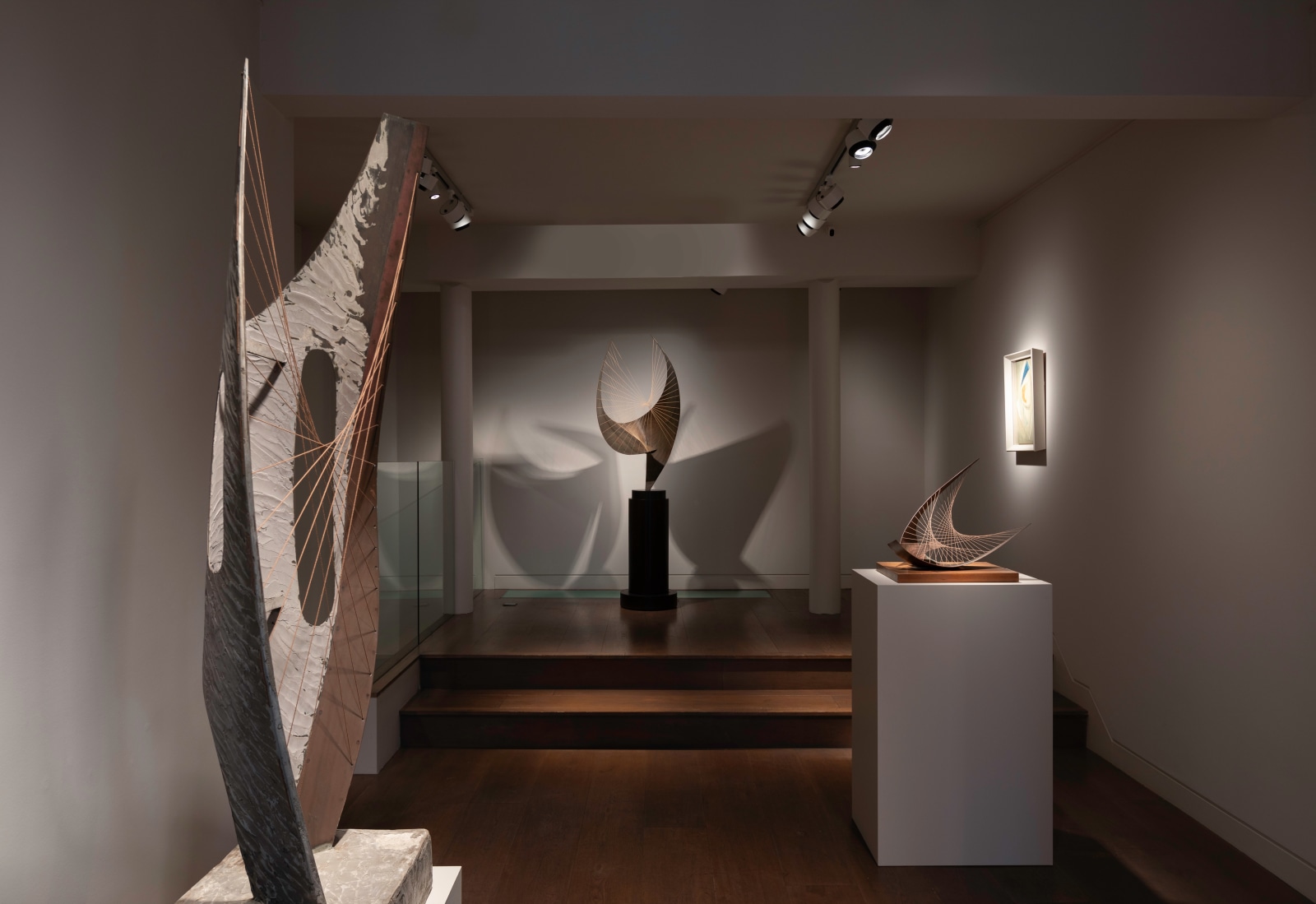
The painting Rhythmic forms is closely related to the Winged figure drawings and sculpture. These works were all made in 1957. In Winged figure, plaster-like Isopon was scraped over the brass sheet. The same coarse urgency of execution is also apparent in Rhythmic forms. The swishing, back-and-forth motion in Rhythmic forms shares the wing-like outline of Winged figure. The black lines in the painting have a terse, graphic quality akin to the pencil drawing that Hepworth practised in other paintings of the fifties and sixties (see InSight 166), and it seems these lines were indeed made with a pen-like utensil rather than a brush. The black lines in Rhythmic forms have a pronounced lip at the outer edges of the line while the central channel of the line is comparatively starved of medium. The utensil that made such marks was probably round and hollow like a reed. The same quality is apparent in related paintings such as Spring, 1957 (Project for Sculpture). Other works of this kind were titled ‘the nest’, ‘high summer’ and ‘dance’, and all such—Rhythmic forms included—seem to mediate the wild rhythms of nature.
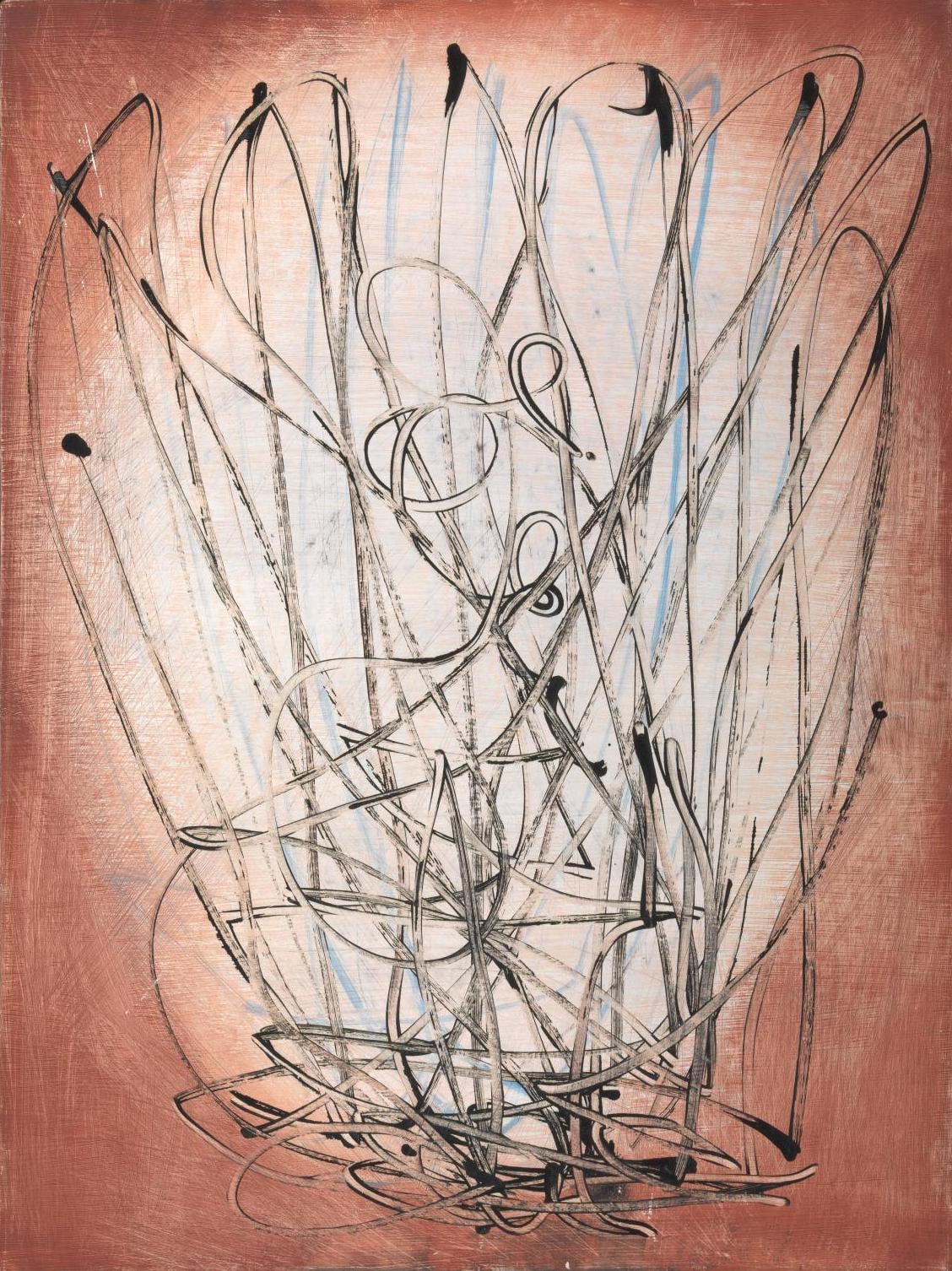
The making of Rhythmic forms is unusually well documented and provides an insight into how Hepworth sometimes worked. Prior to its inclusion in her solo exhibition at Gimpel Fils in London in June 1958, the painting was photographed at Hepworth’s studio in St Ives. Then and in the exhibition, the painting was apparently monochrome: the black lines lay against a clean white ground of wide, textured, horizontal brushstrokes. Later, probably in the early sixties, Hepworth outlined a circle in pencil on the white ground—a moon rising—and surrounded it with washes of colour. The foot of the board is painted in a deeper hue of sea green, which creates a low-lying horizon, while the upper registers are filled with atmospheric washes of green and ochre applied wet on wet. The washes were thin enough to sink back and allow the nest of black lines to re-emerge at the surface of the work.
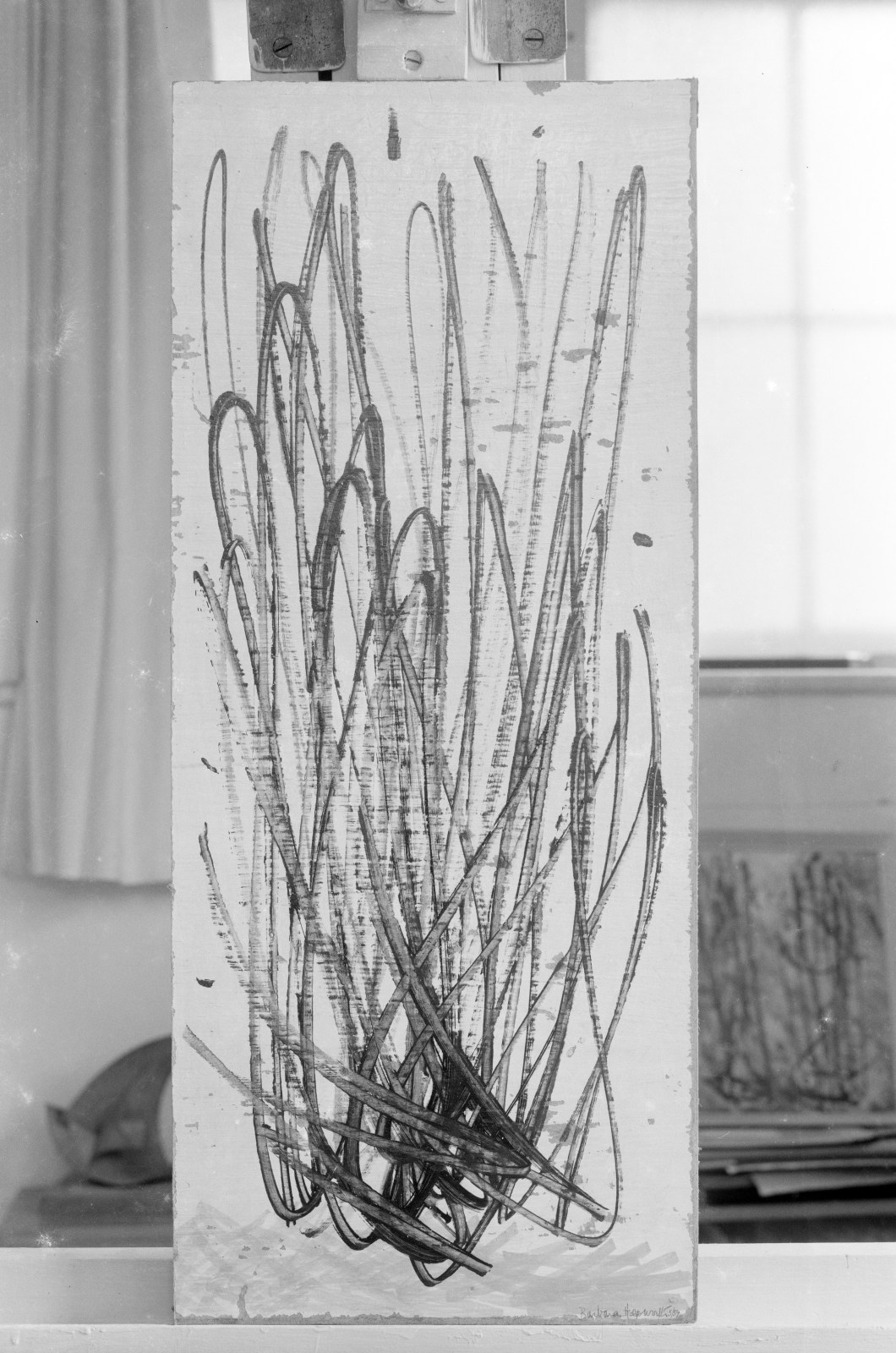
Although Barbara Hepworth is often admired for the classical, reposeful qualities of her work, she was capable of a much wider imaginative range. Along with the looping structures of her contemporaneous bronze sculptures, her black line paintings and sheet brass sculptures marked a departure in her work. The confidence to experiment coincided with growing critical and commercial recognition. Hepworth’s work had represented Britain at the Venice Biennale in 1950 alongside that of John Constable and Matthew Smith, a large retrospective of her sculpture and drawings was held at Whitechapel Art Gallery in 1954, and her work began to be shown in public and commercial galleries in North America. It was during this period that Hepworth entered the wider public consciousness. At the same time, her work expanded into forceful new zones of feeling.
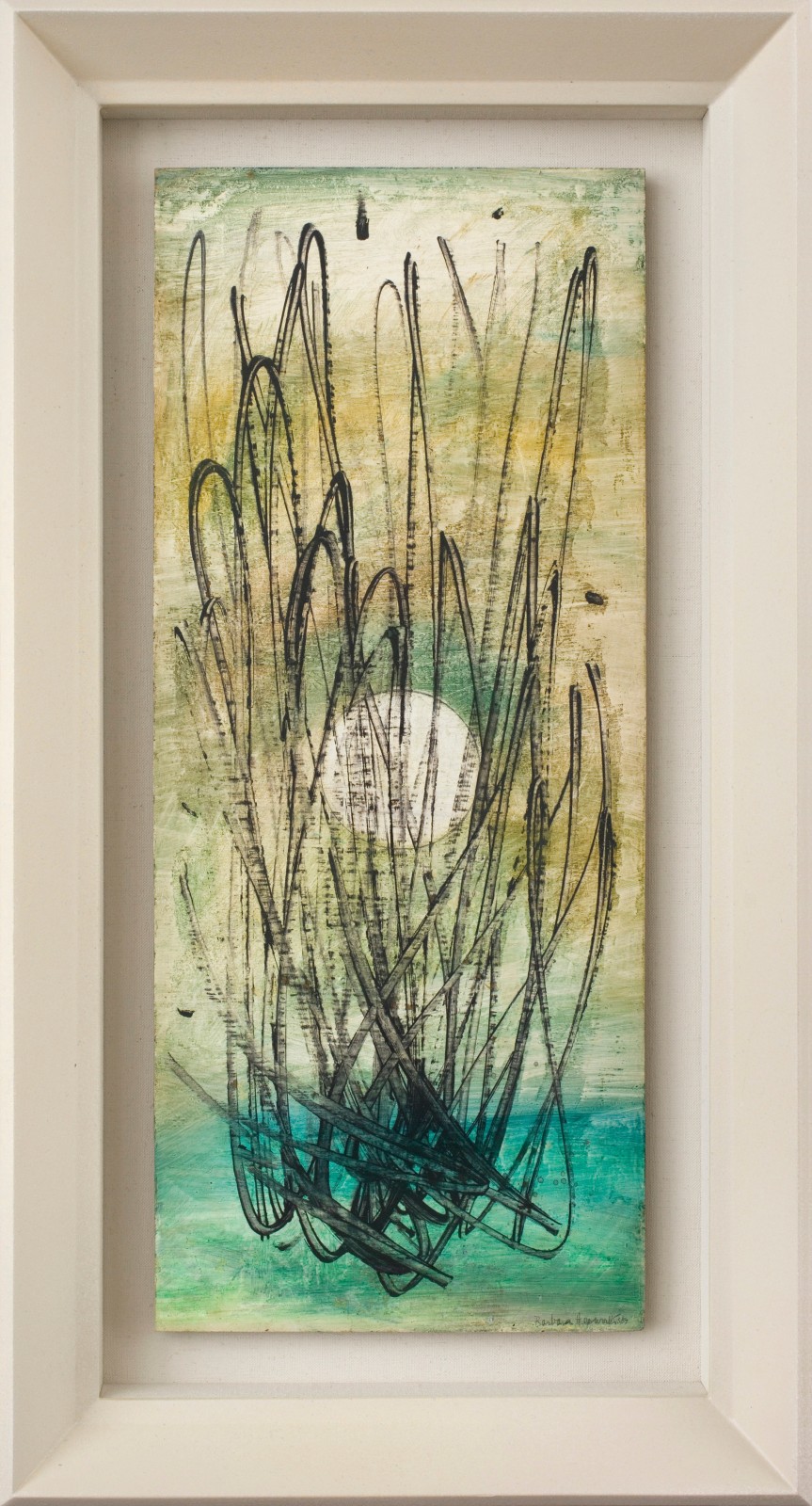
Images:
Barbara Hepworth, Winged Figure – Brass (Project for Sculpture), 1957, British Museum, London © Bowness
An installation photograph of Barbara Hepworth: Strings at Piano Nobile
Barbara Hepworth, Spring, 1957 (Project for Sculpture), 1957, Tate © Bowness
Rhythmic forms, April 1958, photographed by Studio St Ives © Bowness
Barbara Hepworth, Rhythmic forms (framed)

